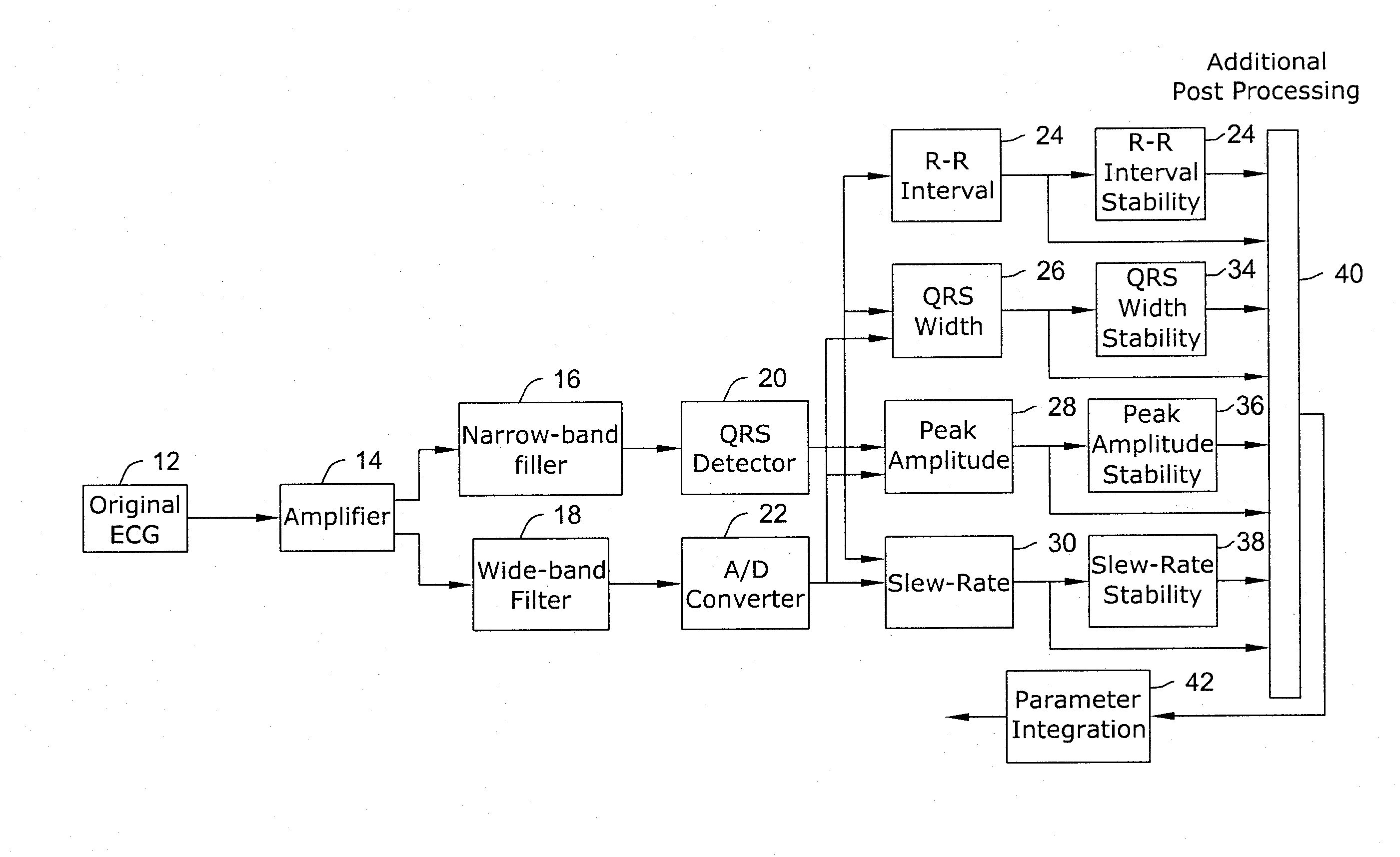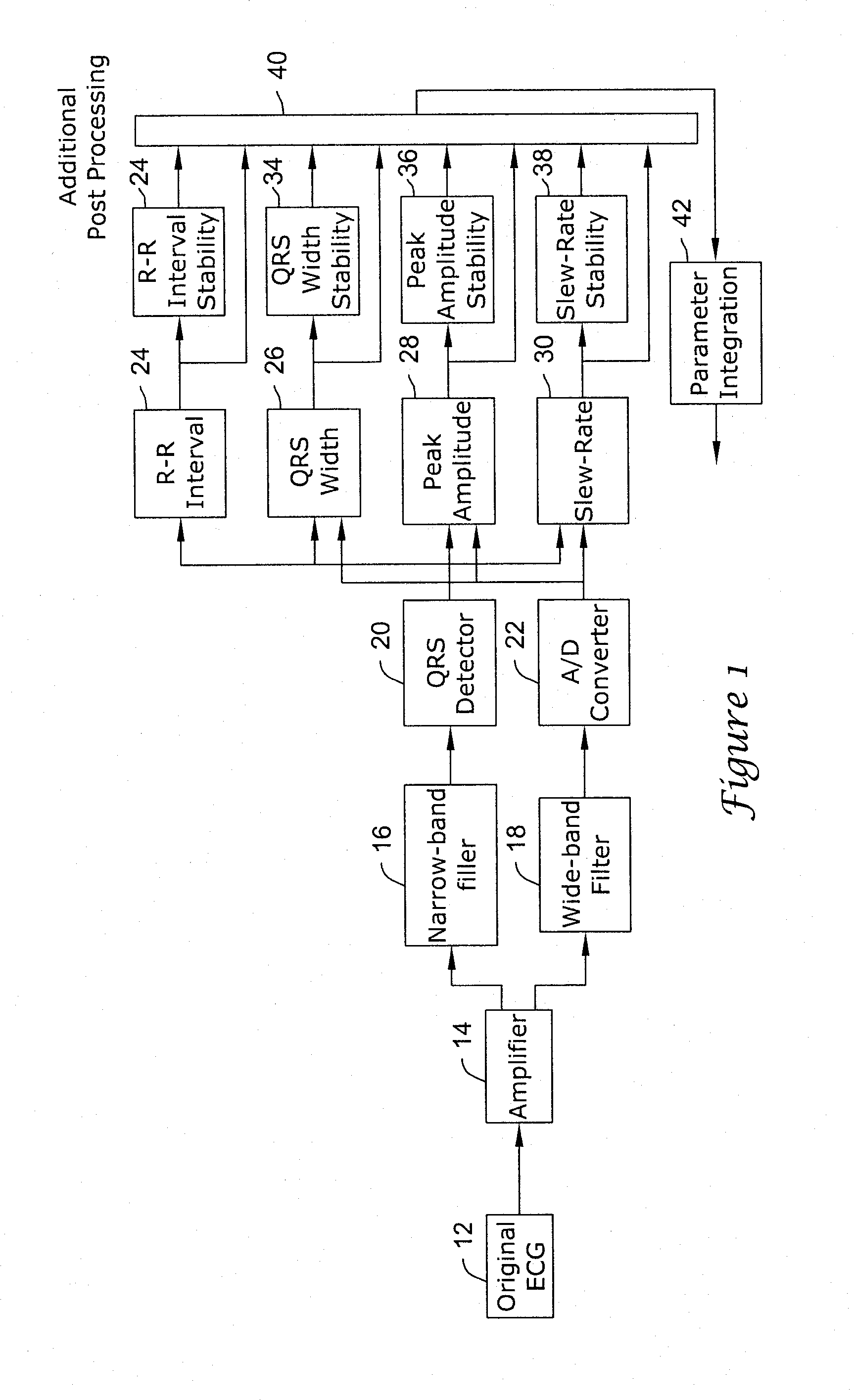Apparatus and Method of Arrhythmia Detection in a Subcutaneous Implantable Cardioverter/Defibrillator
a technology of arrhythmia detection and implantable cardioverters, which is applied in the field of implantable cardioverters/defibrillators, can solve the problems of no practical use, no system use, and no arrhythmia detection
- Summary
- Abstract
- Description
- Claims
- Application Information
AI Technical Summary
Benefits of technology
Problems solved by technology
Method used
Image
Examples
Embodiment Construction
[0035]A flow diagram of an algorithm for detecting various types of cardiac arrhythmias is shown in FIG. 1 and is discussed below. The detection algorithm of the present invention has the ability to detect and treat ventricular rhythm disorders and withhold treatment for supraventricular arrhythmias such as AF. In certain embodiments, the detection algorithm of the present invention can be employed by a Subcutaneous Implantable Cardioverter-Defibrillator (S-ICD) or a Unitary Subcutaneous Implantable Cardioverter-Defibrillator (US-ICD), such as those described in US patent applications titled SUBCUTANEOUS ONLY IMPLANTABLE CARDIOVERTER-DEFIBRILLATOR AND OPTICAL PACER, having Ser. No. 09 / 663,607, now U.S. Pat. No. 6,721,597; and UNITARY SUBCUTANEOUS ONLY IMPLANTABLE CARDIOVERTER-DEFIBRILLATOR AND OPTIONAL PACER, having Ser. No. 09 / 663,606, now U.S. Pat. No. 6,647,292; of which both applications were filed Sep. 18, 2000, and the disclosures of both are hereby incorporated by reference. ...
PUM
 Login to View More
Login to View More Abstract
Description
Claims
Application Information
 Login to View More
Login to View More - R&D
- Intellectual Property
- Life Sciences
- Materials
- Tech Scout
- Unparalleled Data Quality
- Higher Quality Content
- 60% Fewer Hallucinations
Browse by: Latest US Patents, China's latest patents, Technical Efficacy Thesaurus, Application Domain, Technology Topic, Popular Technical Reports.
© 2025 PatSnap. All rights reserved.Legal|Privacy policy|Modern Slavery Act Transparency Statement|Sitemap|About US| Contact US: help@patsnap.com



